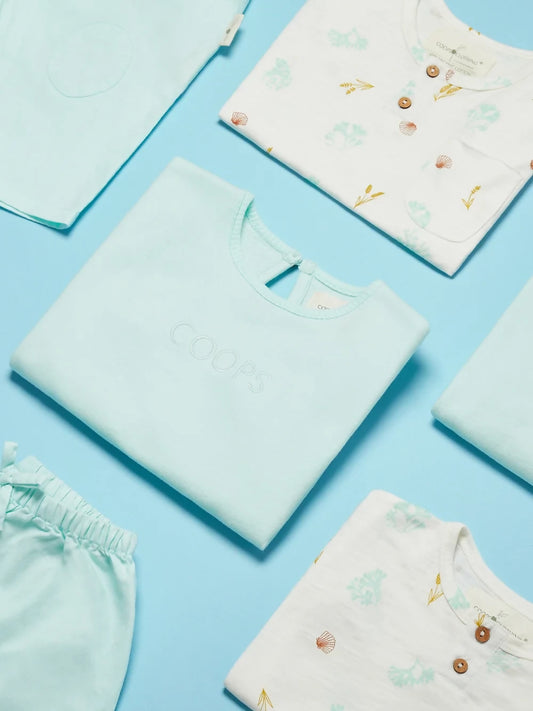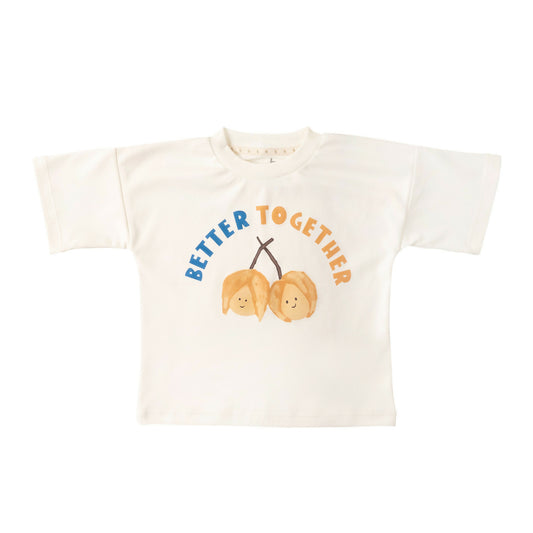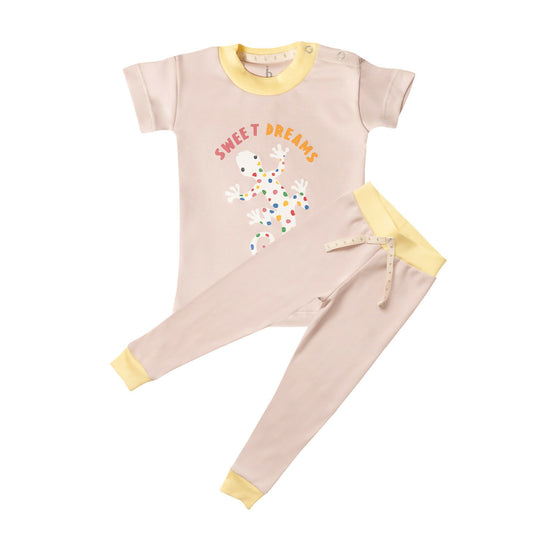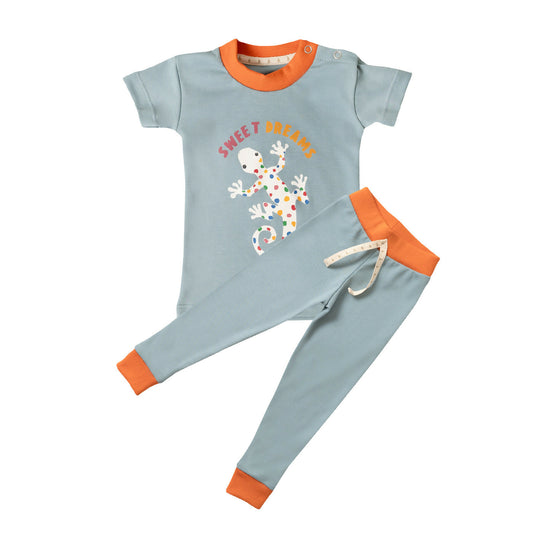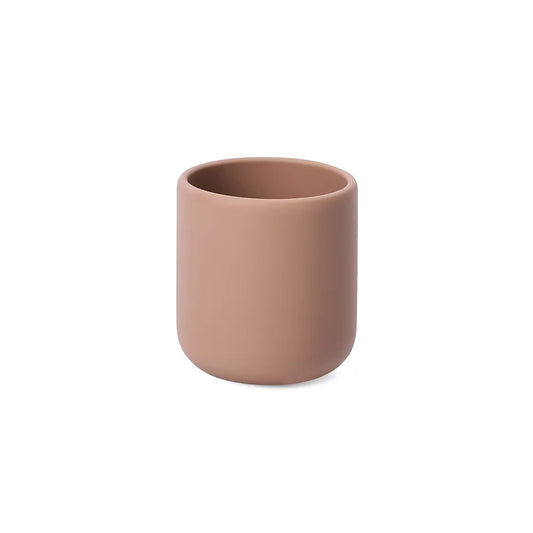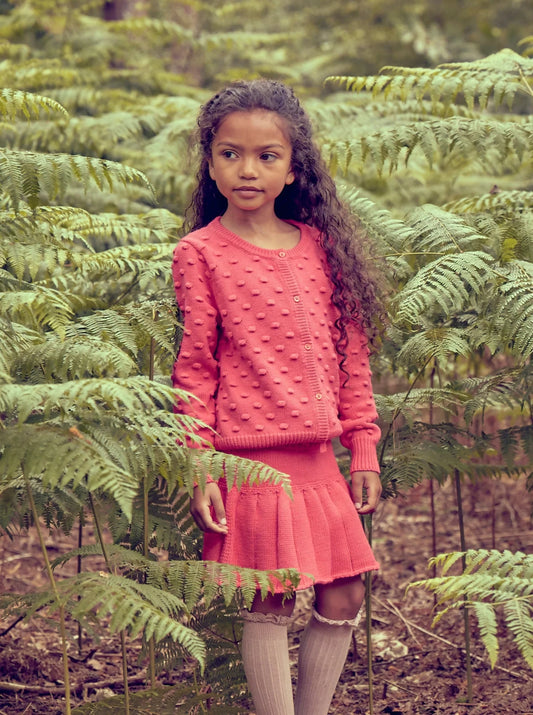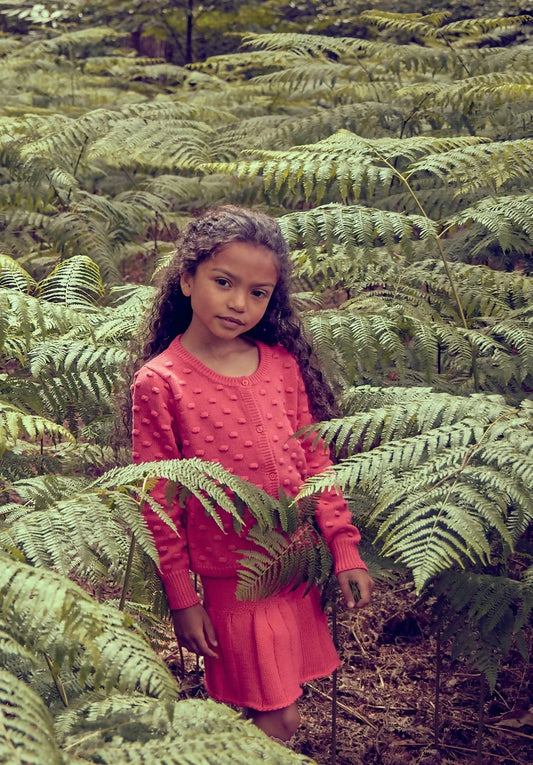
The Benefits of Organic Cotton for Baby and Kids Sleep: A Natural Choice Over Polyester
Share
When it comes to creating a peaceful sleep environment for babies and kids, the choice of materials can make a significant difference. Among the various options available, organic cotton emerges as a superior choice when compared to polyester. Here, we’ll explore the benefits of using all natural, organic cotton for baby sleep, highlighting how it promotes better rest and well-being.
Breathability and Temperature Regulation
One of the standout features of organic cotton is its breathability. Unlike polyester, which can trap heat and moisture, organic cotton allows for better airflow. This helps regulate your baby’s or children's body temperature, reducing the risk of overheating—a common concern for parents. A comfortable sleeping temperature is crucial for promoting restful sleep, as babies in particularly are extremely sensitive to temperature fluctuations.
Softness and Comfort
Organic cotton is renowned for its softness, making it gentle on delicate baby and kids skin. Polyester, on the other hand, can feel rough or stiff and may cause irritation or discomfort. The luxurious feel of organic cotton ensures that babies and kids can snuggle in without any harsh sensations, which can contribute to longer, uninterrupted sleep.
Hypoallergenic Properties
For babies and kids with sensitive skin or allergies, organic cotton is often a safer choice. It’s naturally hypoallergenic, meaning it’s less likely to trigger allergic reactions or irritate sensitive skin. Polyester fabrics can sometimes cause skin irritations due to chemical treatments or synthetic fibres. Choosing organic cotton can provide peace of mind for parents, knowing that their baby is sleeping on a material that minimises the risk of reactions.
Absence of Harmful Chemicals
Organic cotton is grown without the use of synthetic pesticides, fertilisers, or genetically modified organisms (GMOs). This means that when you choose organic cotton for your baby's or kids bedding, you’re avoiding exposure to potentially harmful chemicals. Polyester, on the other hand, is a synthetic fabric derived from petroleum and often treated with various chemicals during production. Reducing your baby’s or children's exposure to these substances can contribute to a healthier sleep environment.
Environmental Impact
Choosing organic cotton is not just beneficial for your baby or children; it also supports sustainable farming practices. Organic cotton farming promotes biodiversity and soil health while reducing the environmental impact associated with conventional cotton farming. By opting for organic materials, you’re not only ensuring a safer sleep for your little one but also making a positive choice for the planet.
Durability and Longevity
While polyester is known for its durability, organic cotton also boasts impressive longevity when cared for properly. High-quality organic cotton products can withstand multiple washes without losing their softness or shape, making them a great investment for baby and kids sleep essentials. Over time, the comfort of organic cotton can even improve as it becomes softer with each wash.
A Calming Sleep Environment
The tactile qualities of organic cotton can also contribute to a calming sleep environment. The natural fibres can absorb moisture and reduce static electricity, creating a serene atmosphere that may help your baby and kids drift off to sleep more easily. In contrast, polyester may create a less soothing experience due to its synthetic nature.
When it comes to creating a safe, comfortable, and nurturing sleep environment for your baby or kids, choosing all natural, organic cotton over polyester is a wise decision. From its breathability and softness to its hypoallergenic properties and eco-friendliness, organic cotton offers numerous benefits that can enhance your baby and kids sleep quality.
The benefits of using organic cotton over polyester starts right at the beginning of the material lifecycle from how the organic cotton is grown in comparison with how polyester is created.
How is Organic Cotton Grown?
- Soil Health: Organic cotton is cultivated using methods that prioritise soil health. Farmers use natural fertilisers, such as compost or manure, instead of synthetic chemicals. Crop rotation and cover crops help maintain soil fertility and prevent erosion.
- Pest Management: Instead of synthetic pesticides, organic farmers employ natural pest control methods. This can include beneficial insects, crop diversity, and organic-approved pesticides made from natural substances.
- Water Conservation: Organic cotton farming often focuses on sustainable water management practices. Techniques such as drip irrigation help minimise water usage and prevent over-extraction from local water sources.
- GMO-Free: Organic cotton is grown from non-genetically modified seeds, ensuring that the plants are naturally cultivated without genetic alteration.
- Harvesting: Once mature, organic cotton is hand-harvested or mechanically harvested. The cotton bolls are picked carefully to avoid contamination and preserve the integrity of the fibres.
How is Polyester Created?
- Petroleum Extraction: Polyester is a synthetic fibre made from petrochemicals, which are derived from fossil fuels. The production begins with extracting crude oil or natural gas.
- Polymerisation: The extracted petrochemicals undergo a process called polymerisation. In this process, the chemicals are heated and reacted to create a polymer, specifically polyethylene terephthalate (PET), which forms the basis of polyester fibres.
- Spinning: The polymer is then cooled and cut into small pellets, which are melted down and extruded through spinnerets—devices that create long strands of fibre. As the fibres cool and solidify, they are stretched to increase strength.
- Textile Production: The resulting polyester fibres are spun into yarn and woven or knitted into fabrics. Additional treatments may be applied to enhance qualities like durability, wrinkle resistance, or moisture-wicking properties.
- Dyeing and Finishing: The polyester fabric is dyed using synthetic dyes and can undergo various finishing processes to achieve desired textures or functionalities.
As shown above, polyester is a more harmful material than organic cotton once created but the creation process is also extremely energy intensive. Throughout its entire life cycle, polyester has so many negative effects on our environment.
Resource-Intensive Production
Fossil Fuels: Polyester is derived from petroleum, a non-renewable resource. The extraction and refinement of fossil fuels contribute to habitat destruction, oil spills, and greenhouse gas emissions.
High Energy Consumption
The production of polyester requires significant energy inputs. The processes of extracting, refining, and manufacturing polyester consume large amounts of electricity, contributing to a higher carbon footprint compared to natural fibres.
Water Pollution
The dyeing and finishing processes of polyester often involve harmful chemicals, which can pollute water sources if not properly managed. Runoff from factories can introduce toxic substances into rivers and oceans, harming aquatic life and ecosystems.
Microplastic Pollution
When polyester fabrics are washed, they shed microplastics—tiny synthetic fibres that can enter waterways. These microplastics are a significant pollutant, affecting marine life and potentially entering the food chain.
Landfill Impact
Polyester is not biodegradable. When polyester products are discarded, they can persist in landfills for hundreds of years, contributing to waste accumulation and soil and water contamination.
Limited Recycling Options
While some recycling methods exist for polyester, the infrastructure for recycling synthetic fibres is not as developed as for natural materials. Many polyester products end up in landfills rather than being reused or recycled.
Greenhouse Gas Emissions
The entire lifecycle of polyester, from production to disposal, contributes to greenhouse gas emissions, exacerbating climate change. The energy-intensive processes involved in creating polyester fabrics release significant amounts of CO2.
Health Risks
The production of polyester can expose workers to harmful chemicals and pollutants, raising health concerns for those in the textile industry.
Conclusion
The impacts of polyester on the planet are significant, from resource depletion and pollution to waste issues and health risks. As awareness of these challenges grows, many consumers are turning to more sustainable options, such as organic cotton and other natural fibres, to reduce their environmental footprint.
Organic cotton is grown through sustainable farming practices that focus on soil health and natural pest management. Choosing organic cotton not only supports a more eco-friendly production process but also provides a healthier option for consumers, especially for items like baby and kids bedding.
Choosing organic cotton for your babies and kids sleep will ensure you create a low tox children's environment that is safe, comfortable, and nurturing. From its breathability and softness to its hypoallergenic properties and eco-friendliness, organic cotton offers numerous benefits that can enhance your baby and kids sleep quality. Improve your baby’s sleep by choosing natural, organic cotton baby and kids sleepwear and bedding.
Browse our children’s sleep range for organic cotton alternatives for all your baby and kids sleep needs.














